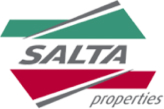The project aims to solve the issue of inner-city traffic congestion and provide greater opportunities for imports and exports in the southeast of Melbourne as it provides an alternative to road-based container transfer.
At the time of the preparation of the CHMP and completion of the salvage program, there was no Registered Aboriginal Party appointed to the area. Representatives of Bunurong Land Council Aboriginal Corporation, Wurundjeri Woi-wurrung Cultural Heritage Aboriginal Corporation, and Boon Wurrung Foundation were invited to attend the fieldwork and be involved in the consultation as they were RAP applicants at the time.
The mechanical salvage was undertaken in April and May 2017. On the former farm site, which had been subject to pastoral and agricultural activities, 42,231 stone artefacts were located. A diverse range of materials, the majority of raw materials was silcrete, followed by quartz. The assemblage includes a wide range of flaking products along with a variety of retouched and ground tools. The materials were found in small clusters which can indicate that they were from individual events. Also uncovered were 32 hearth features which were subject to radiocarbon dating.
The excavation concluded that the site was used for tens of thousands of years, with two to three main peaks of activity within the Pleistocene and Holocene. The location had a wide range of activities occur there, including use as a base camp and a place where stone artefacts were manufactured from materials brought from other locations.
In 2020 Salta Properties and the Vic Government signed an agreement to jointly fund the Dandenong South Intermodal Terminal that includes the Lyndhurst inland port. Work on Melbourne’s biggest intermodal terminal will begin in early 2021.










